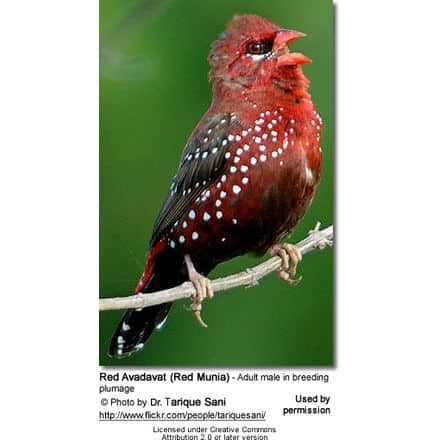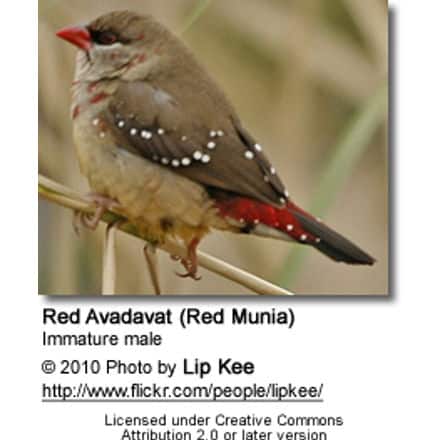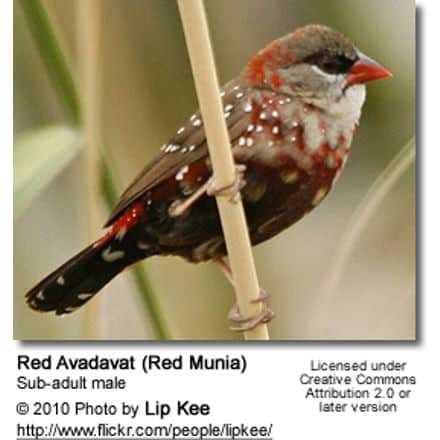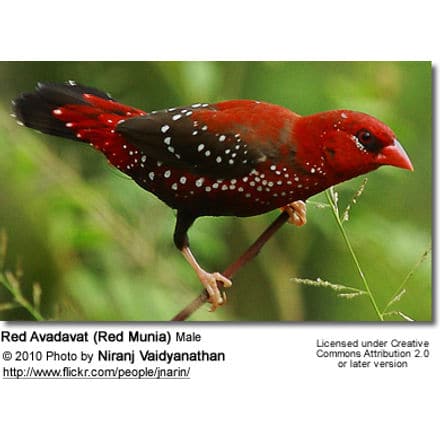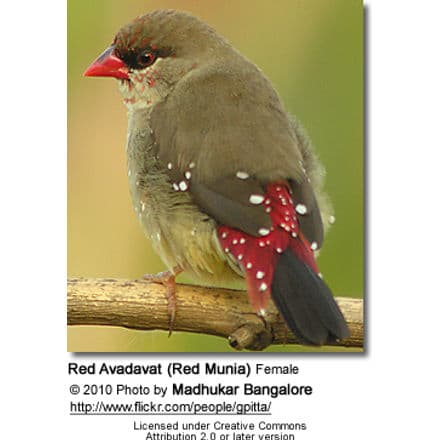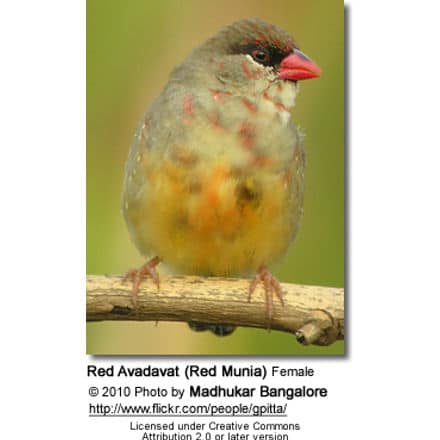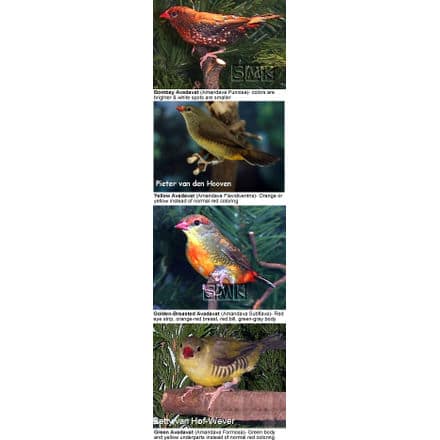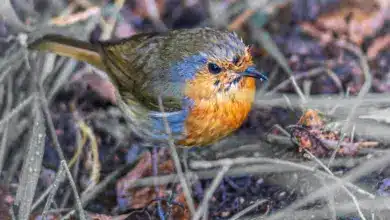Strawberry Finch or Red Munia or Red Avadavats, Tiger Finches
Strawberry Finch or Red Munia or Red Avadavats, Tiger Finches
Related Web Resources: Finch Information … Index of Finch Species … Photos of the Different Finch Species for Identification
The Strawberry Finch or Red Munia or Red Avadavat (Amandava amandava) is a sparrow-sized bird of the Munia or Silverbill family.
They are popular cage birds due to the colorful plumage of the males in their breeding season.
Please refer below to information about their captive care.
Distribution
Their natural range stretches from the Indus valley of Pakistan to the plains of the Brahmaputra extending south to the peninsula of India.
The species has four named populations.
- Amandava amandava amandava – The nominate subspecies is found in Bangladesh, India, Sri Lanka, Nepal and Pakistan;Amandava amandava flavidiventris – The Burmese form is also found in China, Indonesia, Thailand and Vietnam);Amandava amandava punicea – The form in Java is – also found in Cambodia.
They inhabit the flat plains and are usually seen in places with tall grasses or crops often near water.
Introduced populations also exist in southern Spain, Brunei, Fiji, Egypt, Malaysia, Portugal, Puerto Rico, Singapore and Hawaii.
In their natural habitat, they breed in the monsoon season. They build a globular nest made of grass blades. The usual clutch consists of 5 or 6 white eggs
The photos and information are courtesy of Mandy and Paul – Breeder of Canaries and Other Exotic Birds – Singing Wings Aviary – www.singing-wings-aviary.com (A great source for these beautiful little finches)
Description:
In this species of waxbill the hen’s upper body is brown-gray while her underbelly to undertail are yellow-gray. Both sexes have random white spots throughout there plumage, bright red beaks, flesh colored legs and the eyes are black encircled by red-brown.
The male’s plumage resembles that of the hen when he is not in breeding condition. However, once in breeding plumage the males turn a dark bright red color. If enviromental conditions are lacking the male is known to turn black.
Size:
These birds are very small in size ranging from 3-4inches (9-10cm).
Photos to the RIght – Mutations/Sub-species:
(Photos to the right by Singing Wings Aviary – www.singing-wings-aviary.com)
Diet:
Wild birds feed mainly on grass seeds but will also take insects such as termites.
A good captive Strawberry Finch diet is much like that of other waxbills consisting of a small seed mix such as Finch which includes a mixture of millets and seeding grasses.
This waxbill is not highly insectivorous but will benefit from livefood. Small mealworms, waxworms and fruit fly larva can be mixed in with soft food and offered daily.
Fresh water, cuttlebone and grit should also be supplied at all times.
Lettuce, Spinach, Chickweed, spray millet, Eggfood, Brocolli tops and Carrot tops can also be offered on a regular basis.
General Care:
Do not forget to trim your Strawberry Finch’s nails on occasion and provide bath water daily!
Compatibility:
This bird is a good specimen for a mixed aviary provided there is plently of room and other birds out number the Strawberry Finches. During the breeding season or when you have Strawberry Finch males housed together they will become slightly agressive towards the same species during the breeding season.
Housing:
These birds do best in a large planted aviary with mixed species. If you are wanting them to breed you can try seperating them by pairs into large flights. Some people claim they will breed in breeding cages but we prefer to house them in single pair planted flight cages. Some heat will be required durring winter months so these birds are best suited for large indoor aviaries during winter. In the summer time they will thrive and come into best color in outdoor aviaries.
Song:
This species of bird is actualy the only waxbill that has a true song. The song reminds me of a melody of tiny silver bells somewhat resembling that of a Weaver but it is more monotonous. Only the males sing!
Breeding:
Strawberry Finches can be cage bred or aviary bred. You will notice the male collecting nesting material in which the hen recieves and begins building the nest. The average clutch consist on 5-7 eggs in which are incubated for 12-`14 days. The young Strawberry Finches fledge at about 3 weeks old resembling hen or males in eclipse plumage.
Please Note: The articles or images on this page are the sole property of the authors or photographers. Please contact them directly with respect to any copyright or licensing questions. Thank you.


